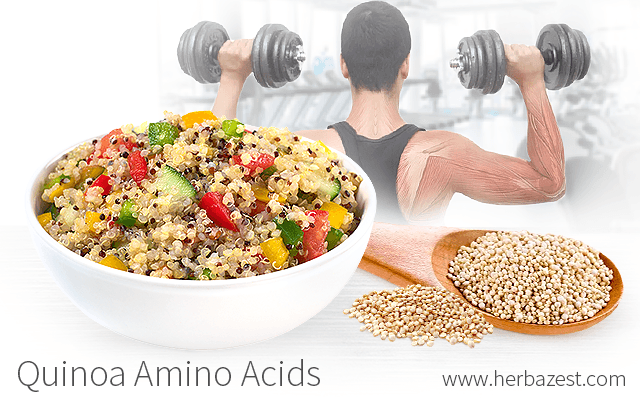As the building blocks of proteins, amino acids are present in many foods. While many people consider animal products to be the best sources of protein, they are not the only ones. Quinoa, for example, is a more balanced and complete source of amino acids than many other widely available foods.
What Are Amino Acids?
Amino acids are organic compounds that combine in specific sequences in order to form proteins. As the body digests protein, the amino acids are used to make new ones that will help to further break down food, repair tissue, contribute to growth, and perform other normal body functions.
There are 20 amino acids needed for the proper functioning of the human body, and they can be divided into three groups:
Essential amino acids. There are nine amino acids that the body cannot produce, so they need to be consumed though food: histidine, isoleucine, leucine, lysine, methionine, phenylalanine, threonine, tryptophan, and valine.
Nonessential amino acids. These amino acids are produced by adults: alanine, asparagine, aspartic acid, glutamic acid, and tyrosine.
Conditionally essential amino acids. Arginine, cysteine, glutamine, glycine, proline, and serine are amino acids that are mainly needed in the body in times of illness and stress as well as during infancy.
Since it is a source of complete protein (that is, it contains all essential amino acids), quinoa is an ideal food for vegetarians and vegans that may be at risk of not consuming enough essential amino acids. It is also recommended for athletes in order to improve their performance.
Amino Acids in Quinoa
The well-balanced amino acid profile of quinoa allows not only for a greater concentration of protein, but also for very high quality protein content.
QUINOA IS CONSIDERED A “COMPLETE PROTEIN” BECAUSE IT CONTAINS ALL NINE ESSENTIAL AMINO ACIDS.
In comparison with other grains, the amount of essential amino acids in quinoa is particularly high. However, other foods that are also considered abundant sources of amino acids and high-quality proteins are milk and spinach, although spinach does not contain tryptophan, and milk lacks histidine, isoleucine, leucine, and valine. In that way, quinoa is a more complete source of amino acids than many other foods.
Quinoa's Lysine Content
Quinoa is particularly rich in one essential amino acid, lysine, which is instrumental for many body functions.
QUINOA'S LYSINE CONTENT IS TWICE THE AMOUNT OF LYSINE FOUND IN TRUE CEREAL GRAINS.
The lysine in quinoa is not only crucial for growth, but also for the production of carnitine, a nutrient responsible for transforming fatty acids into energy. It also contributes to the absorption of calcium and the synthesis of collagen, necessary for the health of bones, skin, tendons, and cartilage.
The best way to make the most out of the amino acids in quinoa, especially lysine, is by eating raw quinoa. The uncooked quinoa seeds, soaked and sprouted, will provide the nutrients the body needs.
Amino acids play very important roles in energy production and cellular regeneration. Considering that not all of them can be manufactured in the body, quinoa's amino acid content offers an excellent nutritional value, making this popular Andean seed a great addition to a healthy diet.
Sources
- APRN Journal of Science and Technology, Amino Acid Composition of Human and Animal’s Milk (Camel, Cow, Sheep and Goat), 2012
- Daily Recommended Dietary Allowances, Chapter 6: Protein and Amino Acids
- Dietary Reference Intakes: The Essential Guide to Nutrient Requirements, p. 149
- Journal of Food and Pharmaceutical Sciences, Physico-chemical Amino acid composition, fatty acid profile, functional and antioxidant properties of Spinacia oleracea L. leaf, 2015
- National Library of Medicine, Amino Acids
- Plant Foods for Human Nutrition, Nutritional quality of the protein in quinoa (Chenopodium quinoa, Willd) seeds, 1992
- Quinoa: High Protein, Gluten-Free, pp. 17-25
- The American Journal of Clinical Nutrition, Essential amino acids are primarily responsible for the amino acid stimulation of muscle protein anabolism in healthy elderly adults, 2003
- University of Arizona, The Biology Project, Biochemistry, The Chemistry of Amino Acids
- World Health Organization, Protein and Amino Acid Requirements in Human Nutrition, pp. 149-152
- MedlinePlus Herbs and Supplements, Amino acids
- University of Maryland Medical Center, Lysine
Footnotes:
- Medline Plus. (2019). Amino acids. Retrieved October 9, 2021 from https://medlineplus.gov/ency/article/002222.htm




